VALLEY GIRL (1983)
Julie, a girl from the valley, meets Randy, a punk from the city. They're from different worlds but find love.
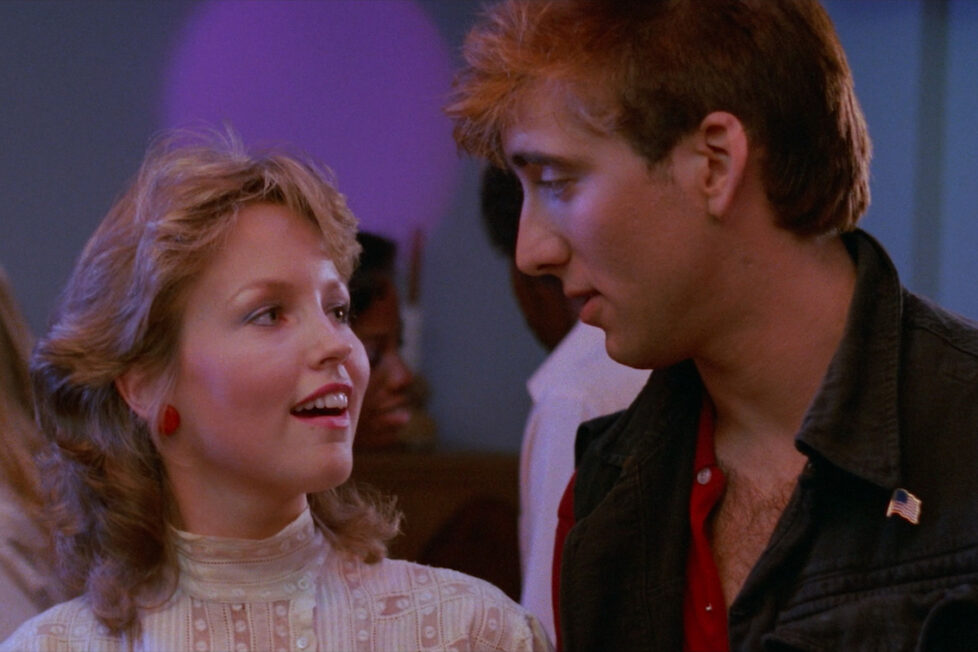
Julie, a girl from the valley, meets Randy, a punk from the city. They're from different worlds but find love.


In the 1980s, the shopping mall was as important to Americans as their churches or homes. They began as a novelty but quickly became indispensable to the US middle class and their self-image. Malls were places you could shop, eat, hang out, and even see a movie. A YouTube search of malls from the era reveals a swath of promotional videos and news reports that introduced the concept of the mall, attempting to persuade the public that this was the great new American invention. People didn’t take much convincing, and nor did we on the other side of the pond…
It’s therefore only fitting that Valley Girl (a cornerstone of another American invention, the teen sex comedy) begins in a shopping mall. In a montage set to a sprightly New Wave track, high schooler and archetypal ‘Valley Girl’ Julie (Deborah Foreman) is on a shopping spree with her pals. They try on clothes (casually handing over the plastic to pay for them), dance, and laugh. Going to the mall is a high for them, but one that’s legal, albeit expensive. It all feels like a great deal of fun. Director Martha Coolidge is careful to show the totals adding up on the cash registers, too, and the credit cards being swiped through. It’s clear money isn’t an issue here.
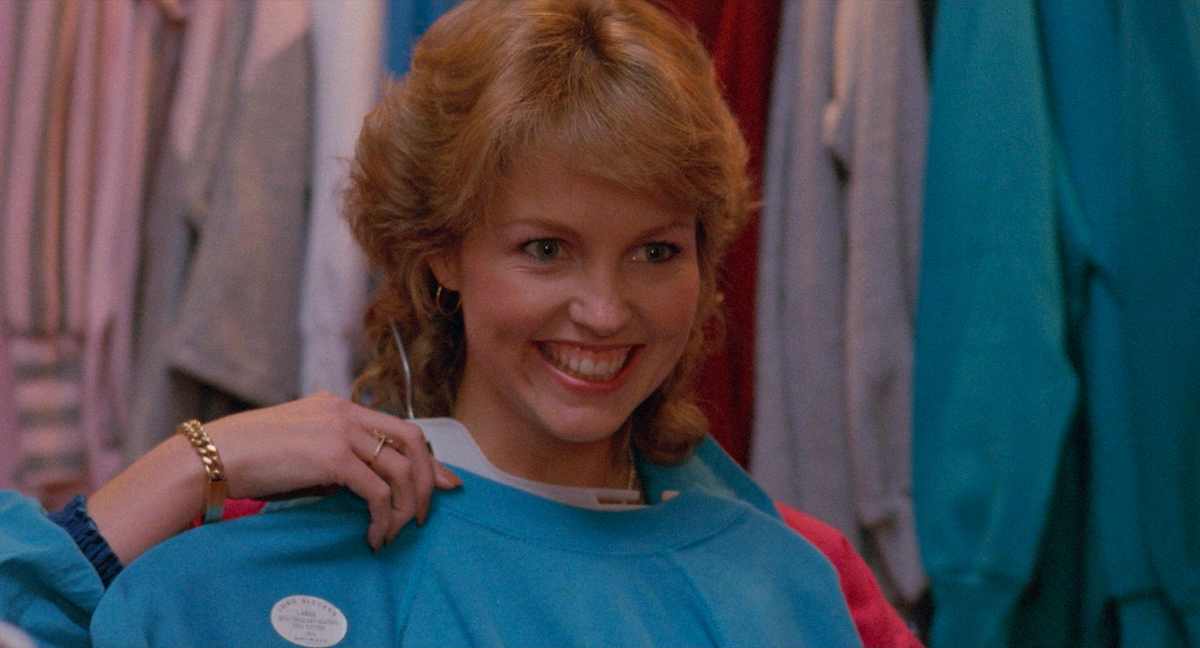
As Julie and her friends sit in the food court, they gab about boys and fashion. Are Coolidge and screenwriters Wayne Crawford and Andrew Lane doing teenage girls a disservice here? Or, on all sides of the gender equation, is it simply a fact that teenagers spend a lot of time talking about the people they want to screw? Julie spots her beau Tommy (Michael Bowen), whom she’s starting to grow bored of. “He’s got the bod, but his brains are bad news” she explains to her pals, who are all baffled that she isn’t more taken with him.
The film is both establishing the quasi-sexist notion of the ‘Valley Girl’ type, and suggesting it’s a boring and predictable trap for the teens it labels too. Julie wants more—she wants something entirely different. These early scenes have a charming ease to them. Coolidge shoots the girls in a shallow focus and lets their conversation linger and overlap. Far removed from the slick and polished teen films that would come to dominate the 1980s, this is a smaller and more intimate mode of filmmaking, with the result being it feels as if we’re eavesdropping on real conversations.
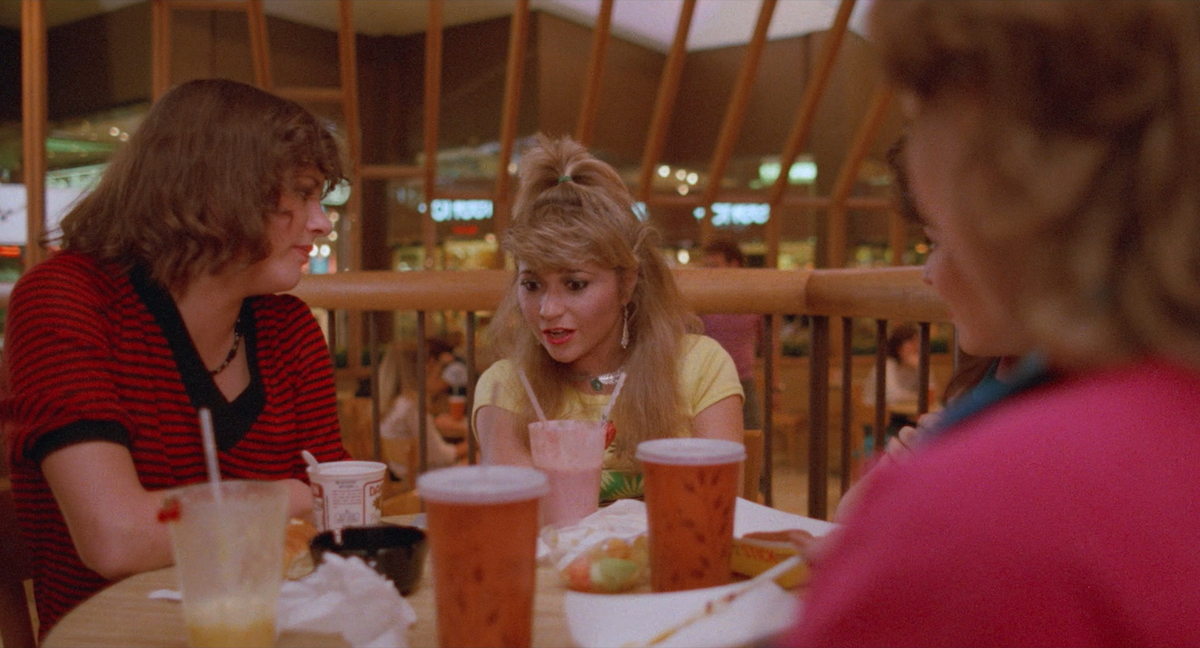
We spend time with these kids as they do exactly what kids of that age do: nothing much at all. They hang out in food courts and diners, drive around aimlessly, then hit the beach. The contrived scenarios of broader teen comedies are nowhere to be found here; in its stead is a more accurate approximation of how teens spend their days. It’s also refreshingly casual, with Coolidge offering up an effortless rhythm and charm that feels lived in. While so many teen films have a hint of desperation in their quest to be hip, Valley Girl feels like the genuine article in the early going.
Julie and her pals spot Randy (Nicolas Cage) on the beach and are all initially attracted to him. He’s in his swimming shorts, so his dress sense and style aren’t an immediate giveaway to them that he’s from a different set. On the beach, everyone is equal. It’s only when Randy and his pal Fred (Cameron Dye) overhear the girl’s plans and crash their party that they realise what they’re dealing with. The pastels and polo necks that mill around don’t know how to take Randy and Fred, two Hollywood punks for whom this party is just something to do, a way to kill an evening.
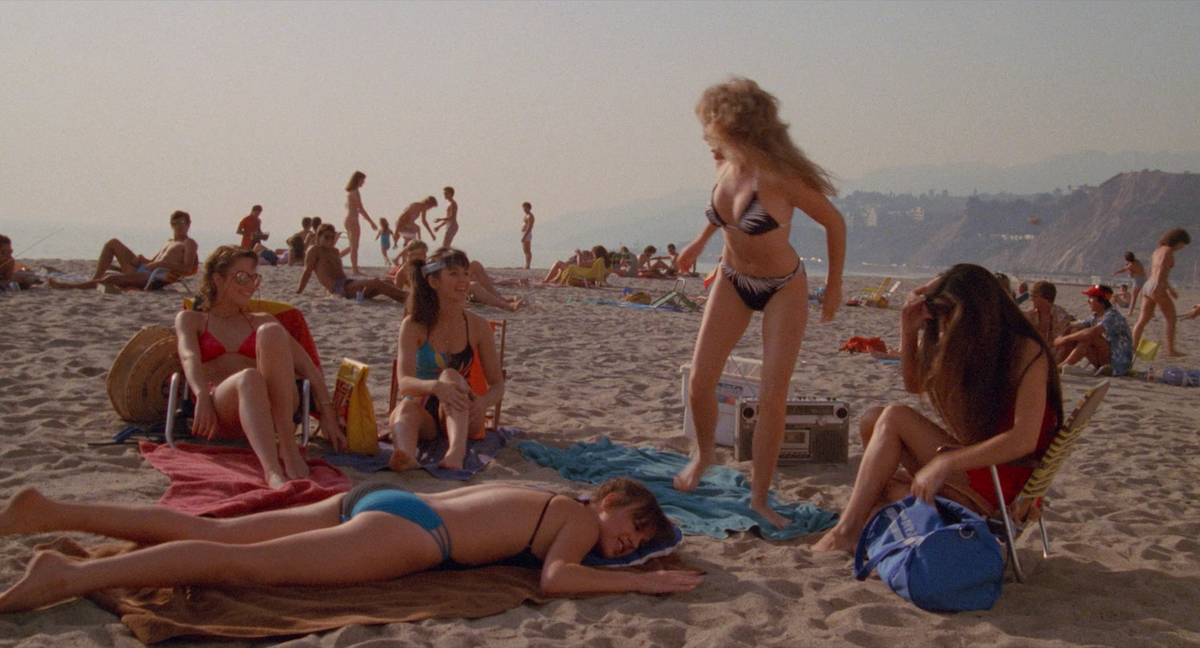
They’re out of place here, as the hostile stares tell them. It’s the casting of a young Nicolas Cage that makes the boys feel truly at odds with their peers. He’s quiet with a soulful intensity beyond his years. Cage was only 19 at the time, and while the rest of the cast feel as if they could be picked up and dropped in any other teen film of the decade, Cage is unlike any of his contemporaries. As strange a fit for a teen comedy as he was, this proves to be the film’s ace in its sleeve, because his performance makes Randy feel truly out of step with everyone else, even Fred.
Julie is the only one drawn to his innate magnetism. They lock eyes at the party and start small talk, Randy revealing he was the one she spotted at the beach. She asks who invited him to the party but seems pleased he’s there anyway. A spark between actors is an impossible thing to fake, but Foreman and Cage have a natural chemistry, a young and slightly awkward connection that neither are sure what to do with. “That chick Julie, she’s truly dazzling,” he confides to Fred. “Yeah, but she’s not one of ours,” he replies.
Thrown out of the party by Julie’s now ex-boyfriend Tommy, Randy sneaks back in to steal Julie away for a night of fun. They cruise through Hollywood, an entirely alien environment to her. Randy knows everyone he passes while she wouldn’t give them a time of day—it’s a sort of safari for her, a trip through a strange land with a tour guide that she’s only just met. They hit the clubs, where they try to get a handle on each other. What the girls do is “no different from what we do,” Fred says. “It’s the way that you do things that makes the difference,” adds Randy.
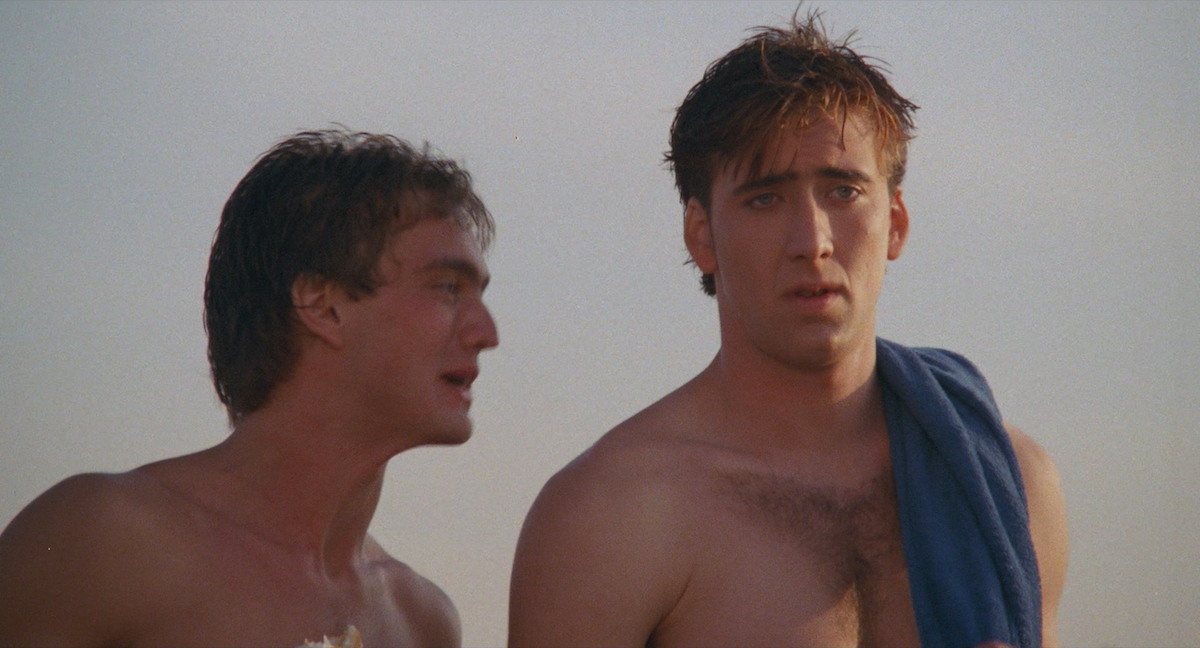
There’s a liveliness to these scenes, the propulsion of the music and the grittiness of the location offering a tour of a place far removed from the malls and mansions of the valley. It also offers a wonderful sense of tension between Cage and Foreman, which is only amplified as they begin to fall in love. Cage has the quality of James Dean, of whom Julie has a picture of on her wall. He couldn’t be further from the preppy types she is usually seen with, but this picture hints that Randy has secretly been her type all along.
All around Julie is a culture at odds with Randy, a clear class divide with her friends all looking down at him and the kind of life that he leads. The most curious aspect of Valley Girl, however, is that despite this divide, the couple do not face a particularly fearsome opposition. Her ex-hippie parents don’t seem to mind at all. In one scene, she asks her mother (Colleen Camp) why she won’t punish her. “Bad Karma, dear,” is her response. Later, a very sweet heart-to-heart with her father (Frederic Forrest) becomes a plea from him for Julie to follow her heart, and to stop worrying about society’s opinions on the matter. It’s a lovely scene, and a refreshing spin on parent-child relationships: what if your parents do understand, and it’s you that’s the problem?
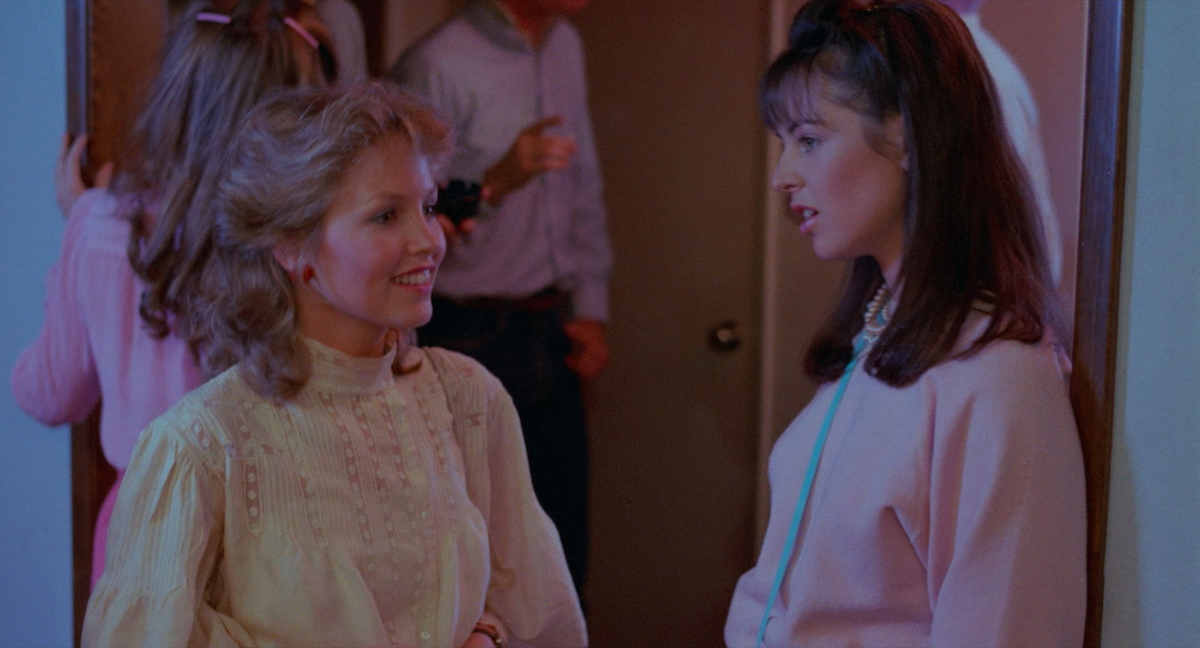
The conflict is an internal one, with Julie wrestling with her own prejudices and rules. The problem is, it doesn’t feel as if there’s enough of a struggle, and there isn’t actually much keeping Julie and Randy apart. Crawford and Lane’s screenplay stumbles as it figures out a way to drive them apart, before inevitably bringing them back together. When Julie breaks up with Randy, it feels a little forced and rushed. Still, the scene itself packs some weight. This isn’t a film of neat one-liners or quips. Randy is devastated, and screams “this is between you and me, so fuck off” at her from her doorstep. It’s ugly, inelegant and realistic. Her choice doesn’t exactly make her likeable, but then, when have teenagers ever actually been likeable?
Randy goes quickly off the rails after his heartbreak, but resolves to win her back. Despite their chemistry together, it stretches credulity that Randy would seek to rekindle this relationship after he was so unceremoniously dumped. The film struggles to find an explanation as to why he so desperately wants to be with her, and this becomes a recurring problem in the last stretch of the film. Events occur because they raise the dramatic stakes, but they don’t feel truthful to the characters. The final gambit that Randy and Fred devise to win her back ends up being hugely anticlimactic—the film’s script was written in only 10 days, and by the end that’s become very clear.
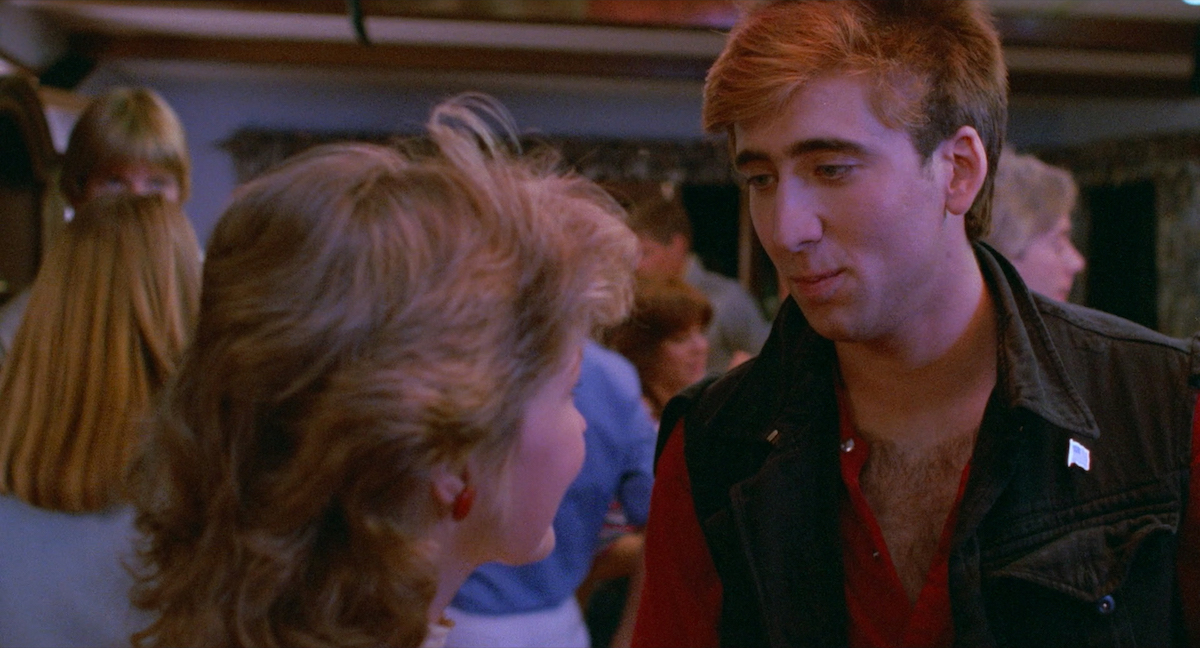
It’s a shame that Valley Girl goes for rushed conclusions and contrivances towards the end, especially as the previous 80-minutes are so instinctive. Instead of insightful, the film’s denouement is forced and formulaic. Elsewhere, there are strange missteps, like the B story of teenager Skip (David Ensor) being tempted by his girlfriend’s mother. The aside doesn’t go anywhere or pay off thematically, instead it is forced into the film, it seems, to pad things out. And there isn’t much memorable about Julie’s group of friends, besides a charming turn from a young Elizabeth Daily.
Valley Girl ultimately feels like a formula that would be later capitalized on and improved by Pretty in Pink (1986). Instead of a perfect exercise of the genre, Valley Girl is a rough-and-ready charmer that works as a sort of stepping stone. It’s closer in tone to Fast Times at Ridgemont High (1982), and by modernising the basic story of Romeo and Juliet for a teen audience, Valley Girl’s influence can be felt in Clueless (1995), 10 Things I Hate About You (1999), and She’s All That (1999), each film taking an old familiar story and adapting it for modern audiences. It’s imperfect but endearing, and a fascinating and authentic snapshot of a specific time in recent history. It’s hard not to be won over by its charms.
USA | 1983 | 99 MINUTES | 1.85:1 | COLOUR | ENGLISH

This is a good looking 4K scan from the original camera negatives. The film was made for only $350,000, and as a result is never the sharpest looking film. Eureka’s new 1080p Blu-ray keeps a lot of the film’s independent grit on display, and highlights a contrasting colour palette, from the pastels of Julie’s world to the blacks and reds of Randy’s. The release sounds fairly good, particularly the iconic soundtrack which has a real heft.

director: Martha Coolidge.
writers: Wayne Crawford & Andrew Lane.
starring: Nicolas Cage, Deborah Foreman, Michelle Meyrink, Elizabeth Daily, Cameron Dye & Michael Bowen.
